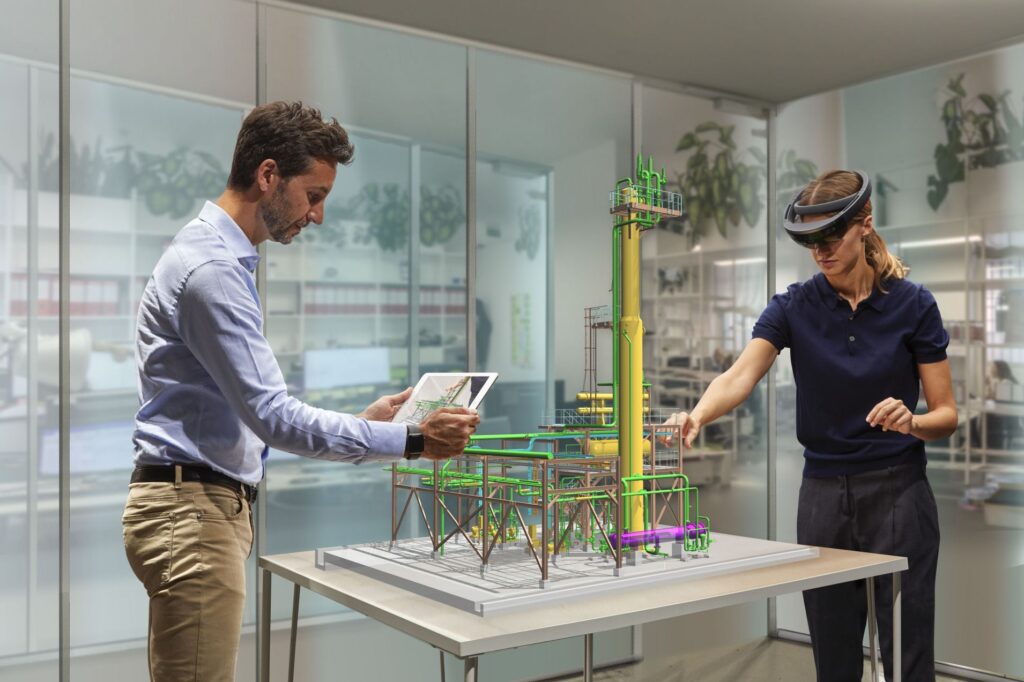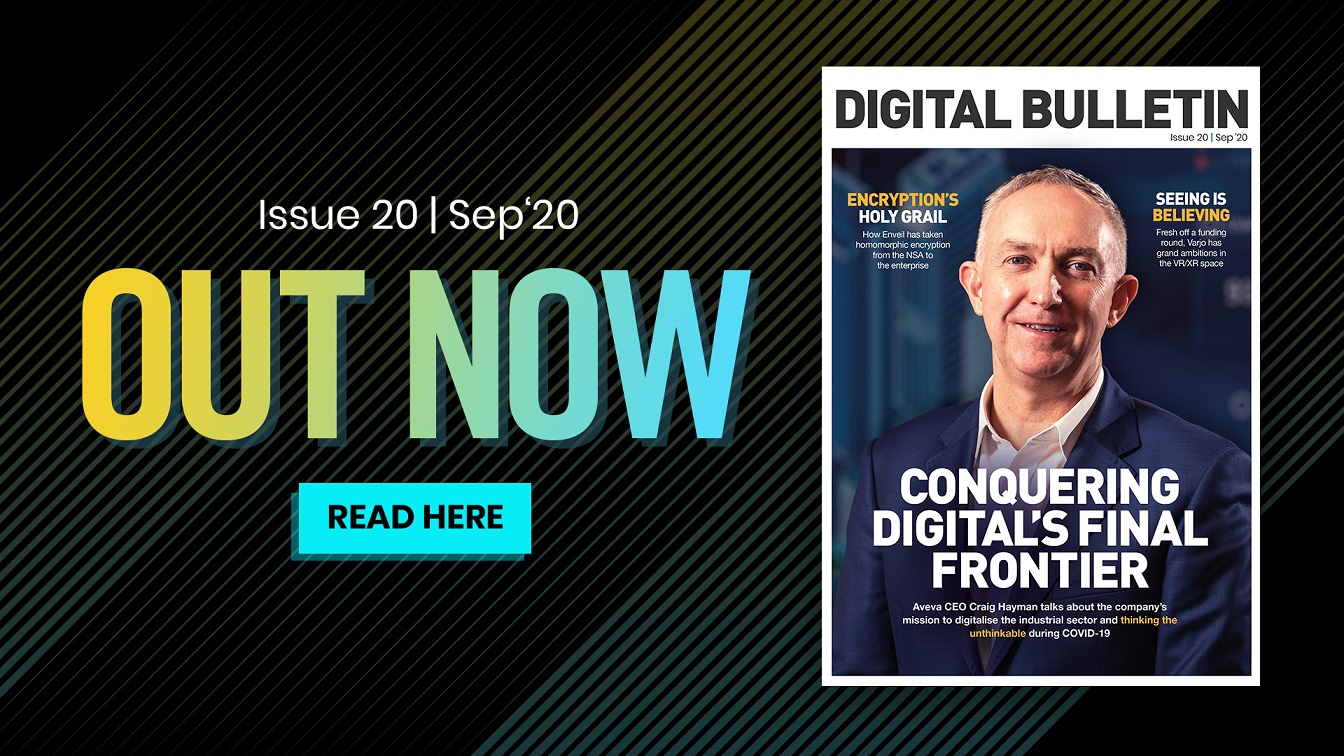
Over the last three decades, digital technology has been embraced at various speeds by the different corners of the enterprise. Supply chains were some of the first processes to become digitised end-to-end with the emergence of SAP and enterprise resource planning tools, while financial services and then ecommerce have since followed. These are digital success stories.
The same cannot be said for the industrial sector, home to the likes of oil and gas, construction, energy and shipping – some of the enterprise’s least digitised areas. The reasons for this are myriad, but the fact is that industrial companies are often considered to be the last commercial frontier to fully embrace the potential of digital transformation.
It is no coincidence that the industrial sector is home to many of the more traditional and conservative industries, a reputation borne from a reluctance to change and an inability to embrace agile ways of working. They are often huge, global monoliths with histories dating back centuries, reinforcing the stereotype.
It’s fair to say that trying to shake up the industrial sector wouldn’t be for everyone, but for Craig Hayman it was a challenge too enticing to pass up. Hayman had spent most of his life working in senior positions for the likes of IBM, eBay and PTC until he got a call in 2018 asking him whether he’d be interested in becoming CEO at AVEVA, one of the world’s leading industrial software companies.
“At the time, AVEVA was going through a transformational change with the Schneider Electric merger, meaning it was going to double in size,” he recalls during a wide-ranging interview with Digital Bulletin.
“I’d seen other industries go through dramatic change because of digital technology, but clearly the industrial sector has not. When I looked at the AVEVA, I could see it had the right people, the right locations and the right technology to drive change and it was something I really wanted to be a part of.”

I’d seen other industries go through dramatic change because of digital technology, but clearly the industrial sector has not
AVEVA counts more than 16,000 companies as customers, with 40% working in the oil and gas space, illustrating the scale of the challenge Hayman and his team has on their hands. But a combination of factors, he believes, is beginning to tip the scales in their favour, helping industrial companies to complete their journeys to full digitalisation that actually began many years ago.
The first factor is the emergence, availability and cost base of technologies such as cloud, artificial intelligence (AI) and big data analytics. “The question is: why is the industrial sector going through a digital transformation now when it hasn’t for several decades?” says Hayman.
“What has happened is that cloud, big data and AI are all available very cheaply, they are almost free, the cost of standing up a cloud server or running an AI technology is really low and is still dropping. Every day it becomes cheaper to run things on the cloud and run AI algorithms, so those technologies are being applied for the first time at scale in the industrial sector.
“The industrial sector was the first to use 3D design tools to manufacture facilities such as oil rigs or ships, and it was the first to monitor gas pipelines, for example. Somehow, other industries have become almost all digital, while the industrial sector hasn’t been able to completely make the leap.”
The rise of AI from a future technology to one that is being used to add
value to businesses in the here and now has gone a long way to helping convince industrial companies about the benefits of digital technologies.
AI is being leveraged by AVEVA’s asset performance management platform to monitor its customers’ systems and collect valuable data around ancillary systems, with impressive results. Hayman draws a parallel between AI’s ability to predict equipment issues with the human ability to instinctively know when something they use regularly – a car, for example – is not quite right.
“We were working with an energy provider in the United States and we determined that there was something wrong with a large gas turbine. The manufacturer said it was fine but when we continued to monitor it, we could see there was an issue. We convinced our customer to machine into a low utilisation mode so they could look at it in more detail.
“What they found was loose aluminum inside the turbine, not from looking inside the machine but from looking at the data that we were receiving. We prevented a catastrophic failure and that saving was around $35 million. We are taking the data and using it to analyse performance and make accurate predictions.”

Hayman says that the last two years have seen rising numbers of Chief Digital Officers and Chief Technology Officers being appointed by industrial companies.
“A number of industrial companies have had success with digital initiatives such as Energy 4.0 and Oil & Gas 4.0, and so view digital as the mechanism to drive their companies forward. There are still companies that had thought they didn’t have to do these things, but that has all changed with COVID-19.”
If the value of big data insights and the wonder that is AI hadn’t convinced many of the industrial sector’s biggest players of the need to go all-in on digital, then the once-in-a-lifetime threat that is coronavirus has.
What COVID-19 has done is get people to think the unthinkable and get comfortable with ways of working that would have seemed impossible just six months ago. Teams in their thousands have fragmented from one single building to locations all around the world, accelerating digital transformation programme timetables from years to mere days.
“Some people don’t like change and will use excuses or reasons about why they don’t want to do something. Working from home was always an interesting concept, well now you don’t have a choice – it’s something that is just done,” Hayman reflects.
“When I’d speak to customers about adopting cloud, many would have issues with the idea. They had a litany of reasons, maybe they didn’t think it was secure enough, or cost was prohibitive, or it didn’t fit in with their company culture.
“None of those reasons mean a thing in this new world and I’ve had customers who have previously shied away from these technologies on the phone asking me how quickly they can get set up in the cloud so their employees can work remotely and be as productive as possible from home.”
Understandably, many customers have looked to AVEVA to help them navigate this new normal. The chemicals multinational Henkel has leveraged AVEVA’s asset performance management platform to reduce its energy output and ramp-up its production schedule, while well-known food and nutrition company Danone has used AVEVA’s software to better inform its performance and workflows.
“COVID-19 has forced companies to prioritise, and what our customers want is capital flexibility and to reduce enterprise risk. Capital flexibility means they can prioritise very quickly where they are spending their money, and make decisions quickly about whether it is still sensible to build a new office or chemical factory.
“They are having to prioritise rapidly because they need to predict how the world will be. With risk reduction, the projects that they are going to run need much less risk, they want to add more certainty. It is very clear that now is not the time for lofty discussions and abstract concepts, but rather being in response mode.”
For AVEVA, COVID-19 is a reminder that you have to accept change and rapidly manage through it, because the world is changing faster than many companies are able to deal with
While helping its customers scramble to maintain operations during this unprecedented time, Hayman has had to steady the ship at AVEVA, with employees, shareholders and stakeholders alike looking to him for leadership during the most trying of times.
He admits that he has had to change his worldview and “mental model” of what constitutes business as usual since the scale of the pandemic became clear. Along with his executive team, Hayman says AVEVA has used a set of principles – including flexibility, learning, integrity and innovation – to guide it through the coronavirus storm.
After meeting with his executive team in the first week of March, it was decided that everyone should work from home, a move that he says would previously have been “completely outrageous”.
“My brain was explaining all the reasons why it couldn’t happen, but you had to change your thinking and this is something that has to happen, that is going to happen,” Hayman says. “For AVEVA, and certainly myself, COVID-19 is a reminder that you have to accept change and rapidly manage through it, because the world is changing faster than many companies are able to deal with – it’s a real challenge.”
Initially there were teething problems, such as not being able to procure computers and desks for some of the company’s most important employees to use from their homes.
“We invest £100 million a year in R&D and that is centred around what we call scrum teams of 10 to 12 people, which are given sets of priorities every 90 days based on conversations with our customers. We have 150 of these teams and we couldn’t get them computers or desks for the love of money,” he comments with a laugh.
“That meant productivity took a hit initially, but once everyone was set up and working remotely we had this productivity boost because they weren’t commuting and they weren’t switching between tasks – it was a very qualitative thing. That means we have to ask what is the future of our work, what is the right mix of having people work remotely and in an office as the world returns back to normal?
“We don’t have the answer, we are still in a learning mode, but learning is very much one of our values and sometimes to learn something you have to ask the difficult questions.”



